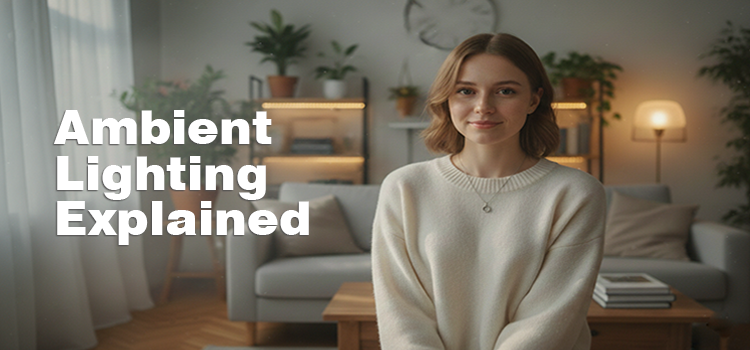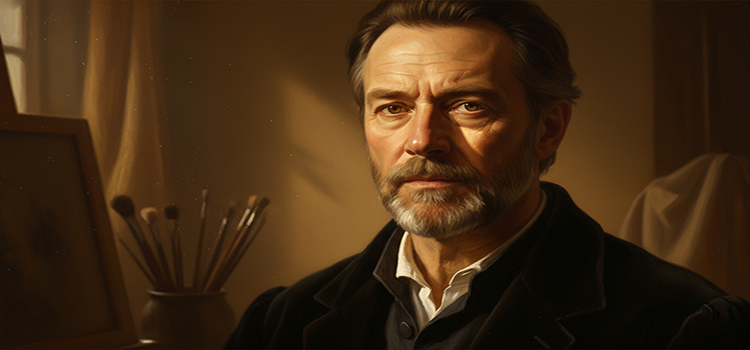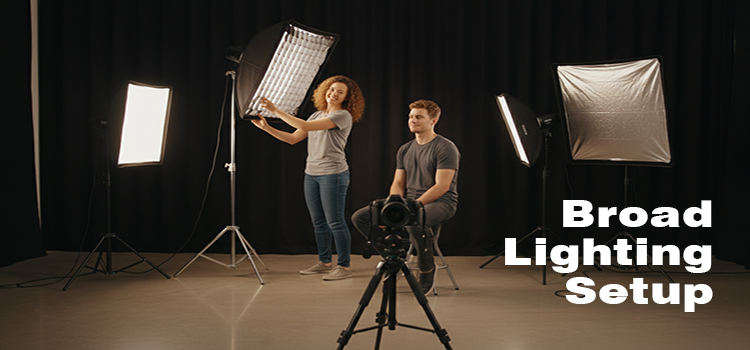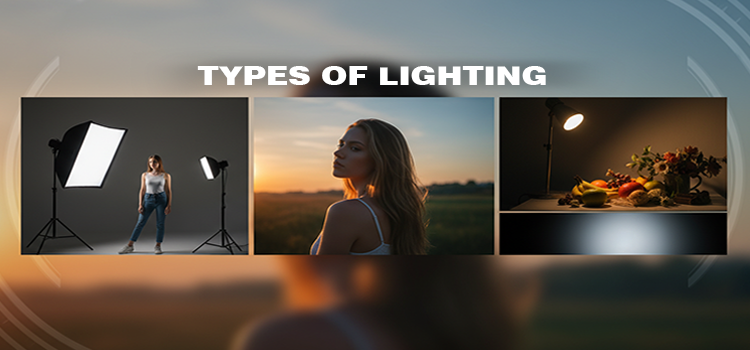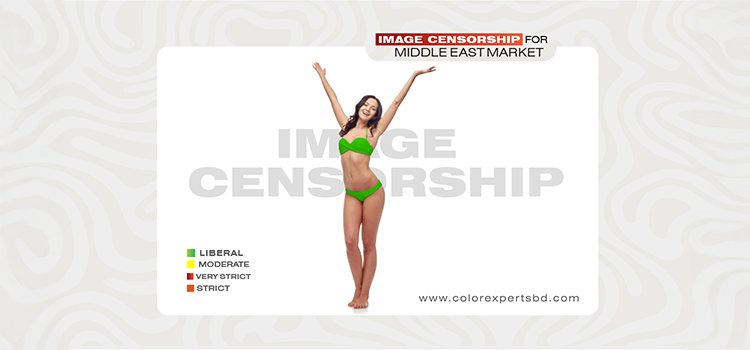How to Use a Reflector in Photography: A Complete Guide

Lighting is crucial in photography. Often, natural or studio lights aren’t enough for the perfect shot. This is where reflectors come in. They’re simple and affordable tools that aid in controlling light. By bouncing light onto your subject, reflectors reduce shadows, brighten dark areas, or add a warm glow.
This guide covers reflectors in photography. You’ll learn to use them for portraits, outdoor scenes, and product photos. Reflectors make images look professional, even with cheap gear. Let’s explore how they can improve your photography.
What is a Reflector in Photography?
A photography reflector bounces light onto a subject. It controls the light’s direction and intensity without adding artificial sources. Usually, these reflectors are flat and made of fabric or foil. They reflect sunlight or studio lights back onto the subject.
Photographers use reflectors to brighten shadows, soften harsh light, or highlight scenes. These cheap, light tools come in various shapes and colors, each creating different effects. Indoors or outdoors, a reflector helps control light for the desired photo look.
Types of Reflectors
Reflectors vary in color and material, each designed to control and enhance light in photography. Below are the most common types and their uses:
White Reflector

A white reflector bounces light onto the subject, creating soft, even illumination. It reduces shadows gently. This makes it perfect for a natural look, especially in portraits. Thus, it’s popular in both outdoor and indoor photography.
Silver Reflector

A silver reflector provides bright, intense light. It’s perfect for adding highlights and contrast in photos. This makes it ideal for needing stronger light or sharper details. However, in direct sunlight, it can be too harsh. So, it’s best used in controlled lighting.
Gold Reflector

Gold reflectors give your photos a warm, golden glow. This enhances skin tones and makes subjects look radiant. They’re instrumental in outdoor photography, like at sunset. Here, they complement natural light with a warmer tone. However, they can add too much warmth if not balanced properly.
Black Reflector

A black reflector differs from others; it absorbs light instead of reflecting it. This reflector is key for creating contrast or darkening parts of a scene. It blocks unwanted light, making it vital for controlling light spill and adding depth to photos.
Translucent Reflector

A translucent reflector, or diffuser, softens harsh light. It allows light to pass through and scatter. This creates even, flattering light. It’s ideal for strong sunlight or harsh studio lights. Commonly, photographers use it outdoors to manage direct sunlight.
How to Choose the Right Reflector for Your Photography
Choosing the right reflector is key for your photos. Consider these factors to pick the best one for you:
1. Color of the Reflector
- White Reflector: Use this for soft, natural light with low contrast. It’s ideal for portraits and gentle lighting.
- Silver Reflector: Pick a bright light that boosts contrast and highlights. This is ideal for low light or dramatic effects.
- Gold Reflector: Best for a warm, golden light. It’s ideal for outdoor shoots, especially at sunrise or sunset.
- Black Reflector: It absorbs light, enhancing contrast and deep shadows. This is useful for blocking unwanted light or reducing reflections.
- Translucent Reflector: It acts like a diffuser. It softens harsh light, especially in direct sunlight or strong artificial light.
2. Reflector Size
- Small Reflectors (12-24 inches): Ideal for close-up or product photography. It’s also portable and easy to use.
- Medium Reflectors (32-42 inches): These are suitable for portraits and small groups. They provide ample coverage and are easy to handle.
- Large Reflectors (48+ inches): These options are best for full-body or group shots. They spread light more widely but may need an assistant to use them.
3. Shape of the Reflector
- Round Reflectors: Easy to handle and store, perfect for general use.
- Oval Reflectors: They have a wider surface. So, they are good for lighting larger areas or more subjects.
- Triangular Reflectors: They are for solo use, as they often have handles. This allows easier positioning without an assistant.
4. Portability
If you’re shooting on location or moving between settings, use a lightweight, foldable reflector. It’s easy to transport.
5. Reflector Stands or Assistants
If you work alone often, consider a stand for your reflector. This lets you adjust the light without needing help.
Common Techniques for Using a Reflector
Reflectors offer several versatile lighting techniques that can enhance your photography. Here are some techniques you can follow to achieve the best output:
Fill Light: This technique reduces shadows on your subject by bouncing light onto them. Place the reflector opposite the main light source, like the sun or a window. This softens harsh shadows and creates even, flattering light. It’s often used in portrait photography for a balanced look.
Key Light: A reflector can also be the main light source. Position it to catch and direct light onto the subject. This creates a soft, natural glow. It’s especially effective outdoors, where it achieves a controlled, natural effect.
Hair Light: This technique, called rim light, places a reflector behind or above the subject. It highlights the edges of their hair and outline. This adds depth, making the subject stand out. It also creates a subtle glow or rim effect.
Background Light: Reflectors bounce light onto areas behind the subject. This enhances background lighting. It creates a more dynamic, well-lit scene. This is especially useful in low light or when highlighting the background. It avoids the need for artificial lights.
Catchlight in Eyes: A reflector can add highlights to the subject’s eyes, making the portrait more vibrant. When placed near the face, it directs light into the eyes. This brightens the photo and draws in the viewer.
Reflector Positioning: How to Angle Your Reflector for Maximum Effect
Positioning your reflector correctly is crucial for the desired lighting. Here’s how to angle it for various situations to achieve the best results:
Front Fill Position: Position the reflector in front of your subject, facing the main light. This setup evenly bounces light onto their face, reducing shadows and softening harshness. It’s especially beneficial in portrait photography for a flattering look.
Side Lighting Position: Place the reflector beside your subject to light up shadows. This method adds depth to your photos, mixing highlights and shadows. It’s perfect for dramatic portraits or product shots, emphasizing contours.
Top Bounce Position: For softer, even lighting, position the reflector above your subject at an angle. This setup directs light down, adding highlights and reducing overhead shadows. It’s ideal for outdoor or studio shoots, offering diffused light without harsh contrasts.
Below Subject Position: Place the reflector under your subject to bounce light upwards. This fills shadows, especially under the chin or in areas with heavy overhead shadows. It achieves balanced lighting in portraits. Moreover, it prevents unflattering dark spots under the eyes or chin.
Angling the Reflector for Catchlight: Place the reflector near the face to add a catchlight in your subject’s eyes. Make sure it captures the main light and reflects it into their eyes. This will make their eyes sparkle and stand out in the portrait.
How To Use Reflectors- Indoors vs. Outdoors
A reflector’s effectiveness differs between indoor and outdoor shooting. Here’s how to use them in each setting for the best results:
Using Reflectors Indoors: Indoors, natural light is often scarce. So, reflectors are key. They boost light and manage shadows. Place reflectors near windows or light sources. This way, they evenly bounce light onto your subject.
In indoor spaces, reflectors soften harsh light from lamps or overheads. They create a flattering, diffused effect. You can easily adjust reflectors to direct light where needed.
Using Reflectors Outdoors: Outside, natural light, especially sunlight, can be both good and tricky. Reflectors are ideal for controlling bright sunlight. They reduce shadows and ensure even lighting. On sunny days, reflectors soften direct sunlight and fill in harsh shadows.

On cloudy days, a reflector boosts brightness by bouncing light. Outdoors, conditions change. So, you might need to adjust the reflector to match the sunlight.
DIY Reflectors: How to Make Your Own Reflector
Making your own reflector is simple and cheap, especially for beginners in photography. Here are a few easy ways to create DIY reflectors with common materials:
1. White Foam Board:
- How to make it: Buy a white foam board from an office or craft store. Its white surface softly reflects light, perfect for filling shadows.
- Best for: Portraits and close-up shots where you want even, natural light.
2. Aluminum Foil:
- How to make it: Take a large piece of cardboard or foam board. Cover one side with crinkled aluminum foil. This texture scatters light, softening it. For a stronger reflection, use smooth foil.
- Best for: It adds bright, crisp light to your subject. It’s ideal for high-contrast photos or product shots.
3. White Bedsheet or Curtain:
- How to make it: Stretch a white bedsheet or curtain over a large frame, like wood or PVC, or simply hang it up. When placed correctly, the fabric becomes a reflector or light diffuser.
- Best for: Diffusing harsh sunlight or bright artificial light, especially in outdoor shoots.
4. Poster Board or Paper:
- How to make it: Use a large piece of white poster board or thick paper. It reflects light softly, like foam board. Plus, it’s lightweight and easy to position.
- Best for: Quick, impromptu reflector setups for portrait or food photography.
5. Mirrors:
- How to use it: Small mirrors or large ones can direct light onto your subject. Though the light can be harsh, these mirrors are great for creating focused highlights.
- Best for: Directing small, intense beams of light to create artistic or dramatic effects.
Tips for DIY Reflectors:
- Portable options: Use lightweight, portable materials for outdoor shoots.
- Handling light intensity: Reflectors bounce back different amounts of light based on their material. So, test them to find the right reflection for your needs.
- Budget-friendly: These DIY reflectors cost little to nothing. You can often make them with items at home.
Practical Tips for Reflector Photography
A reflector can greatly enhance your images. Here are tips to optimize its use in photography:
1. Choose the Right Reflector for the Situation:
Different reflectors produce different effects. For softer, more natural light, opt for a white reflector. Use a silver reflector for brighter light and more contrast, and a gold one for adding warmth. Black can block unwanted light or create contrast, while translucent reflectors diffuse light.
2. Use a Reflector Stand or Assistant:
If you’re alone, a reflector stand keeps the reflector steady. This lets you focus on composition and shooting. An assistant, however, makes it easier to experiment with angles and positions.
3. Adjust the Angle for Best Results:
The reflector’s position and angle control light on your subject. First, place it opposite the light source. Then, experiment by moving it closer, further away, or to the sides. Small changes can greatly affect the lighting.
4. Watch for Hot Spots and Glare:
Reflectors can create bright spots or glare, especially silver or gold ones. To avoid this, angle the reflector away from the subject. Alternatively, use a softer reflector, like white.
5. Experiment with Different Distances:
The distance between the reflector and the subject affects light intensity. Closer reflectors create brighter light. Moving them further away softens the light. Adjust the distance to balance light and shadow.
6. Use Reflectors to Create Catchlights:
Place the reflector to direct light into the subject’s eyes. This creates catchlights, small highlights that make eyes sparkle and add life to portraits. Silver or white reflectors are best for this effect.
7. Combine Multiple Reflectors:
In advanced setups, you can use multiple reflectors for better light control. For example, a silver reflector brightens the subject. Meanwhile, a black reflector reduces light spill or adds shadows on the opposite side.
8. Be Mindful of Outdoor Conditions:
Outdoors, wind can be tricky with large reflectors. Secure your reflector or have someone hold it to avoid ruining your shot. In bright sunlight, use a translucent reflector to soften harsh light.
Reflector Kits: What to Look for When Buying
Buying a reflector kit can enhance your photography. With so many options available, knowing what to look for is essential. Here are the key factors to consider when purchasing a reflector kit:
1. Reflector Size:
Reflectors come in various sizes, and the size you choose depends on your needs:
- Small (12-24 inches): Ideal for product photography, close-ups, or when you need portability.
- Medium (32-42 inches): It’s a versatile choice for most portrait and outdoor shoots. It offers a good balance of size and ease of handling.
- Large (48 inches or more): Ideal for full-body or group portraits, these reflect a lot of light. However, they are often bulky and difficult to handle alone.
2. Multiple Surfaces in One Kit:
Many reflector kits have multiple surfaces in one frame. This offers flexibility.
- White: For soft, natural light and reducing harsh shadows.
- Silver: For bright, crisp light with increased contrast.
- Gold: To add warm, golden tones, especially in outdoor or sunset lighting.
- Black: To absorb light, control spill, or add contrast.
- Translucent: Often used as a diffuser, softening harsh light and reducing intensity.
3. Shape and Portability:
Reflectors come in assorted designs: circular, oval-shaped, and triangular.
- Round or Oval: These are the most common, versatile shapes. They are perfect for general use.
- Triangular: Often, it has a built-in handle for easier solo use. This makes it a good choice if you’re working without an assistant.
4. Durability and Build Quality:
Reflectors are for outdoor use, so they must be durable. First, pick those with strong, easily foldable frames. Then, check for high-quality, tear-resistant fabric that is well-attached.
5. Ease of Use and Setup:
Some reflector kits include stands or holders for easy, solo setup. This is especially helpful for large reflectors or when you’re alone. So, check how simple it is to set up and pack away, especially for travel.
6. Budget and Brand Reputation:
Reflector kits vary in price. However, trusted brands offer better results and durability. Brands such as Neewer, Westcott, and Impact are known for reliable, long-lasting reflectors.
To Conclude
Reflectors are essential in photography. They control light without expensive gear. Use them for portraits, products, or outdoor shots. Reflectors soften shadows, enhance highlights, and create professional lighting.
They come in various types, sizes, and materials. Picking the right one can enhance your work. Whether you make a DIY reflector or buy a kit, experimenting with placement and methods improves your photos. It also gives you better control over lighting. So, embrace reflectors to elevate your photography.


